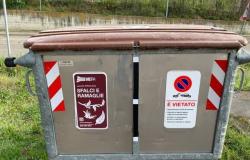The first Italian-Croatian train on the Trieste-Fiume/Rijeka route, via Slovenia, was inaugurated on 24 April and will be active until September. Two hours to connect the two cities in a 71 kilometer journey through the three countries with often disputed borders.
The train of the three countries
At 7 am on April 24th the first one left train which will connect until September Trieste and Rijeka/Rijeka, every day at 7.50am – and return at 6.25pm – with stops at the stations of Sežana/Sezana, Divača/Divaccia, Pivka/San Pietro del Carso, Ilirska Bistrica/Bisterza, Šapjane, Matulji/Mattuglje and Opatija/Abbazia . One-way ticket price: 8 euros.
It is a pilot project of cooperation which aims to better connect rural, peripheral and cross-border areas of Italy, Slovenia and Croatia. The capacity of the Stadler Flirt train of the Slovenian Railways (Slovenske ŽelezniceSŽ) is made up of 235 units, with adequate spaces for disabled passengers, in addition to the bicycle and stroller transport service along all routes 71 kilometers that separate Trieste from Rijeka.
The project was 80% funded by European funds through the INTERREG Central Europe plan. His spokesman, Winfried Ritt, states that what is happening “commits people to cooperate for peace“, in the hope of being able to be “a source of inspiration for other regions too”. According to Vlasta Kampoš Jerenec, from the Slovenian Ministry of Infrastructure, this train is not just an offer of sustainable mobility, but also an opportunity to “connect people”. For Roberto Antonione, general secretary of the Central European Initiative (CEI), an organization based in Trieste, the project represents an important step towards “improving the connectivity throughout Europe”.
The maiden voyage
For the maiden voyage, all but one of the carriages were reserved for official guests. In the only car open to “simple” travellers, a group of friends, two couples, a man in his fifties and two cycle tourists found themselves. A crowd filled the platform at the Divača stop, where Tatjana and Mara got on board and started handing out biscuits and grappa home made.
But the touring star who attracted photographers’ flashes and cellphone cameras was the baritone Jure Počkajwho offered passengers his interpretation of the famous Andrea Bocelli song, I will leave with you. With perfect timing: the emotion aroused by Počkaj’s singing performance traveled in unison with that of the crossing of the border between Slovenia and Croatia, certified again on an acoustic level by the appearance of twenty-four year old Rok Gombač with his accordionwho opened the dance with typical dances.
TO Ilirska Bistrica Mayor Gregor Kovačič and a handful of girls in traditional dresses and long braids get on board, including two other fifteen-year-old accordionists, Barbara and Klara. At 9.50 the train reaches its destination, Rijeka station, where the party continues on the platform, between music, dancing and shots of grappa. The mayor of Rijeka Marko Filipović welcomed the train and its Trieste counterpart, Roberto Di Piazzareminding those present that the Trieste-Rijeka route is active for centuries in the itineraries of people who move between the two main ports of the eastern Upper Adriatic.
The tracks of reconciliation
The train travels on a line built byAustro-Hungaric Empire 150 years ago. In those days the Habsburg royals could travel by rail along their domains and have breakfast in Trieste, travel to Slovenia for lunch, and end the day in Rijeka for a show, perhaps in a theater decorated by Gustav Klimt.
Then the twentieth century it brought with it the unresolved issues of the eastern Italian question with its borders, D’Annunzio’s revolutionary celebration, fascism and the ferocious occupation of the Balkans, the sinkholes with the findings of a few years ago, the collapse of Yugoslavia and the wars of the nineties. A century of hatred and violence who have corroded peaceful coexistence by poisoning this strip of land on the Adriatic.
Despite the iChinese investments cause construction sites to multiply (from the Serbian capital Belgrade to the tiny village of Subotica, on the Hungarian border), the Balkan railways are not doing well; and despite the modern trains that have made their timid appearance, the railway operation here is still largely managed with traditional criteria and infrastructure, at times anachronistic. Jon Worth knows something about this, and he is crossing all international borders by rail in the Balkans to bring attention to the lack of investment and cross-border cooperation.
However, rail travel in the Balkans has a fascinating tradition and engaging stories, with breathtaking photography itineraries. However, after the interruption at the end of the Second World War and decades of inactivity, the restoration of the railway connection Trieste-Rijeka is very strong symbolic value, not only for the three countries involved, but also for all of Europe. The roads to reach the reconciliation they are a lot. This time it’s a railway.
Photo: www.tportal.hr
I like:
I like Loading…



